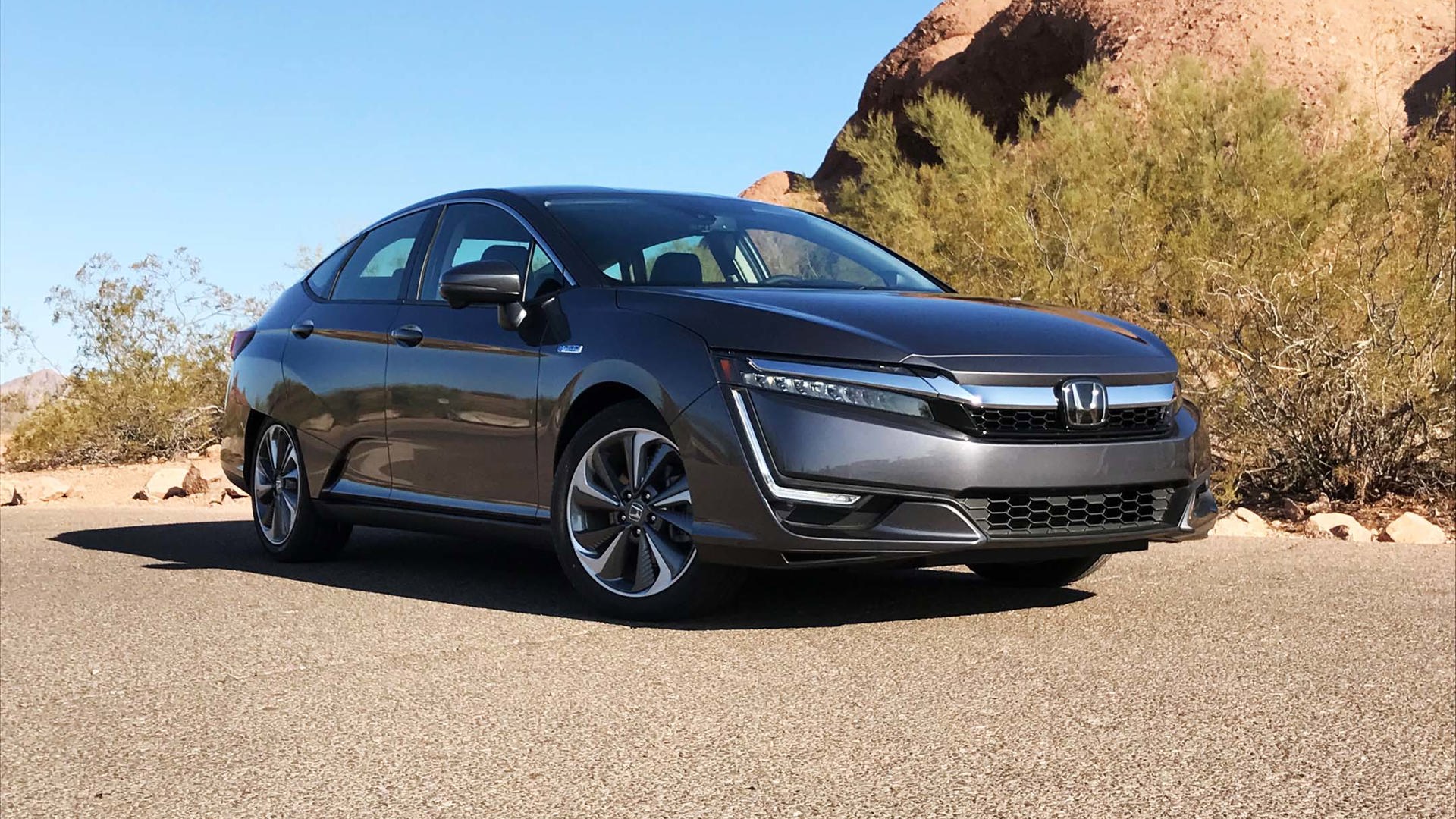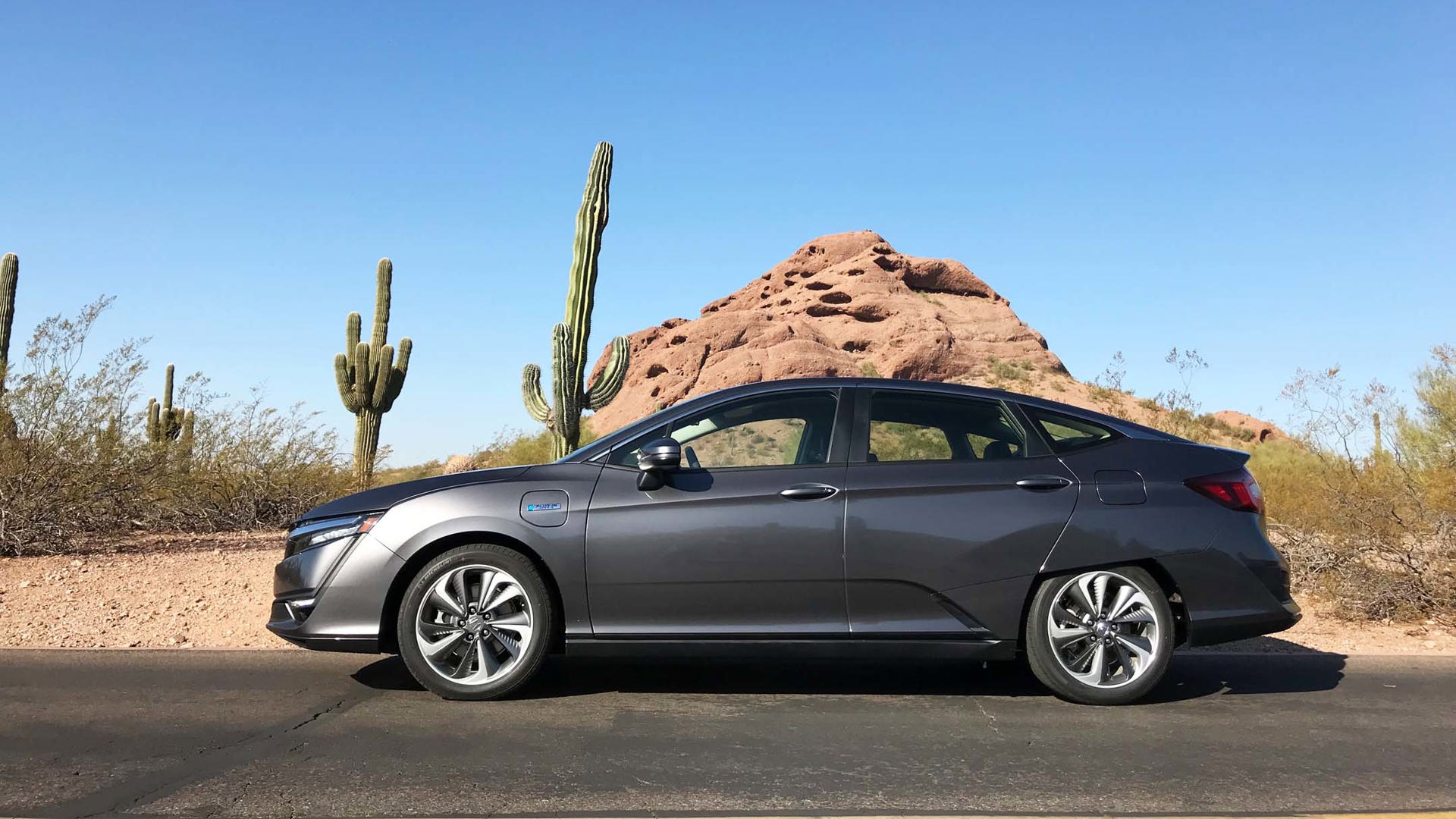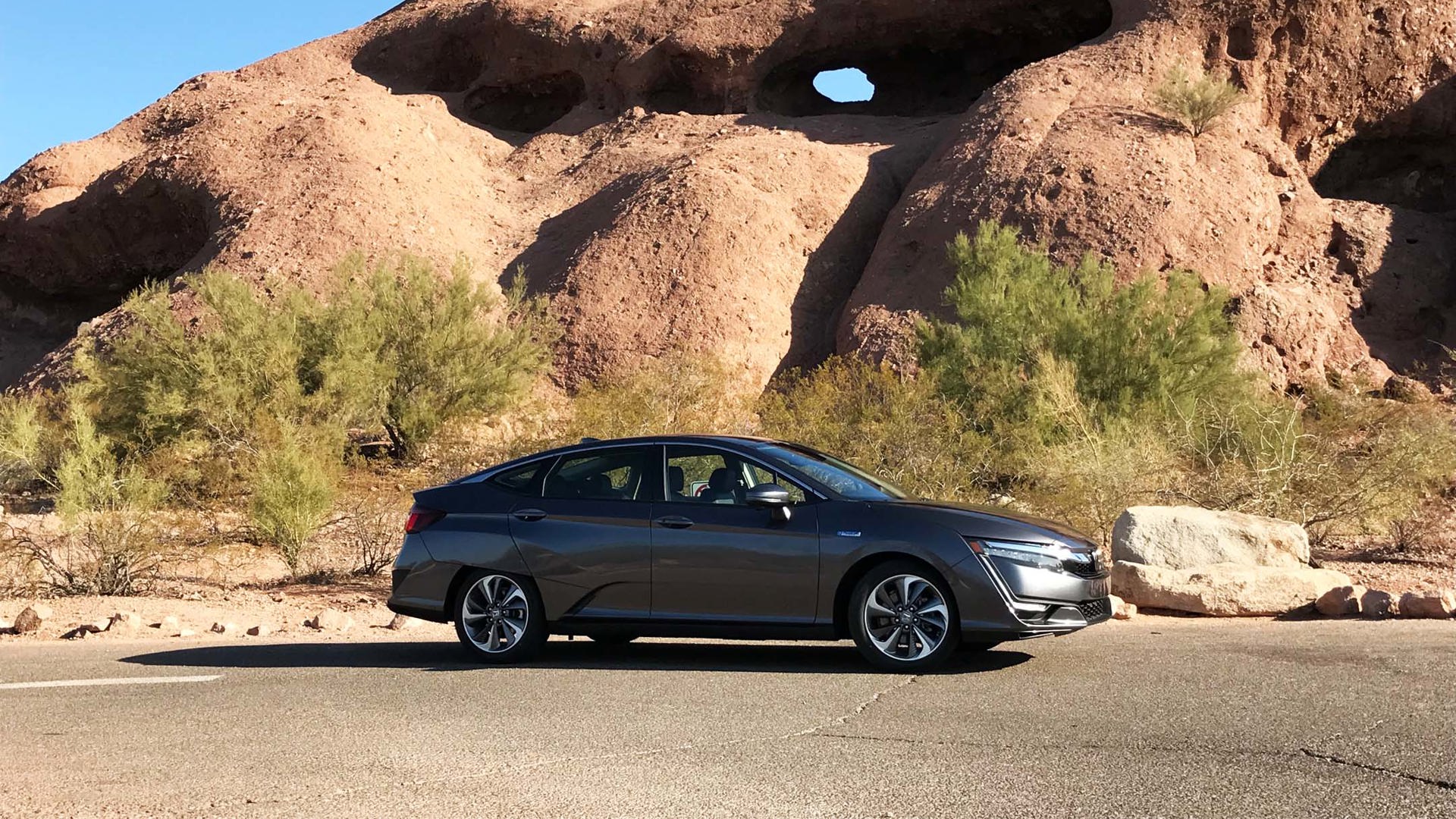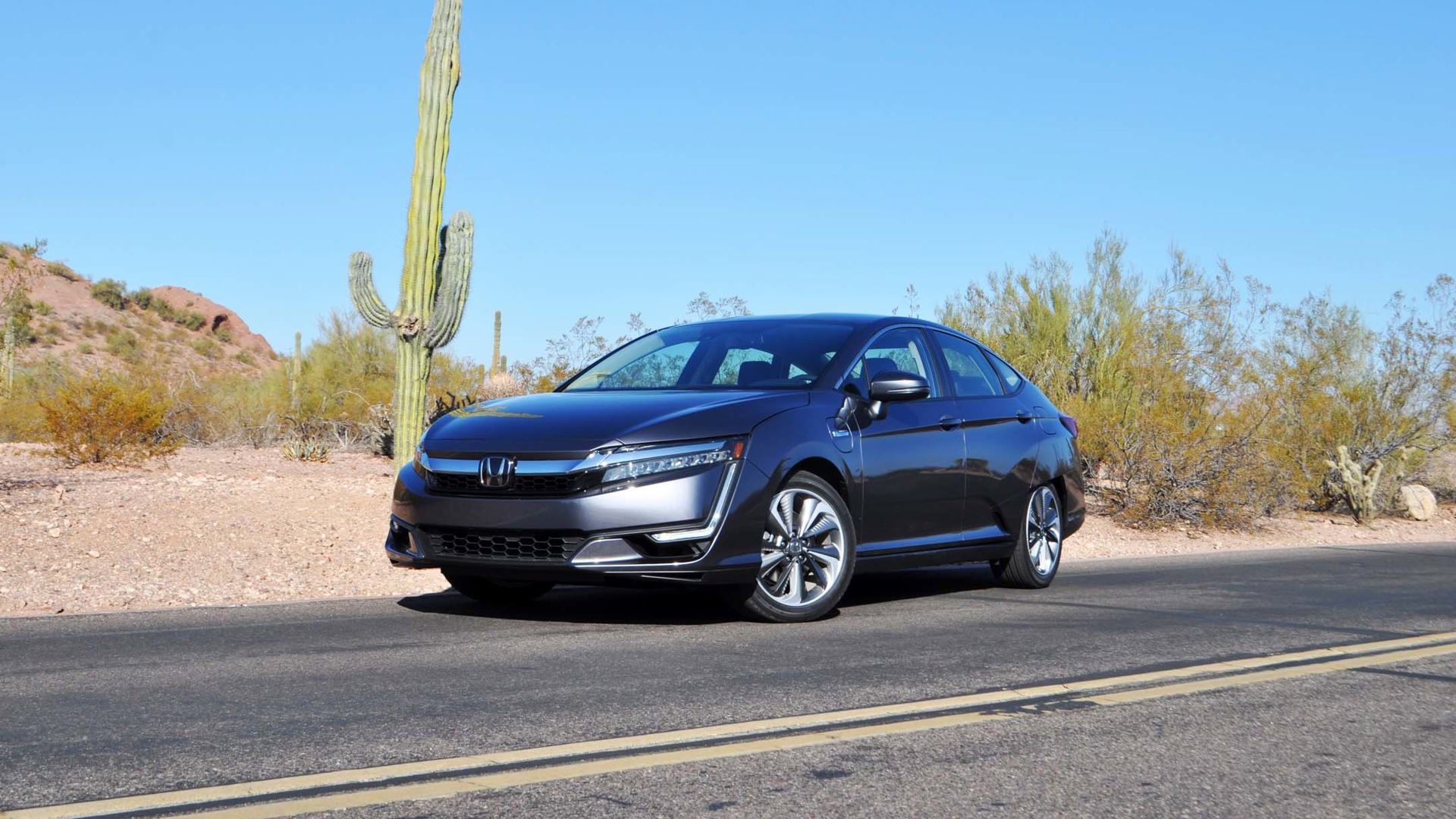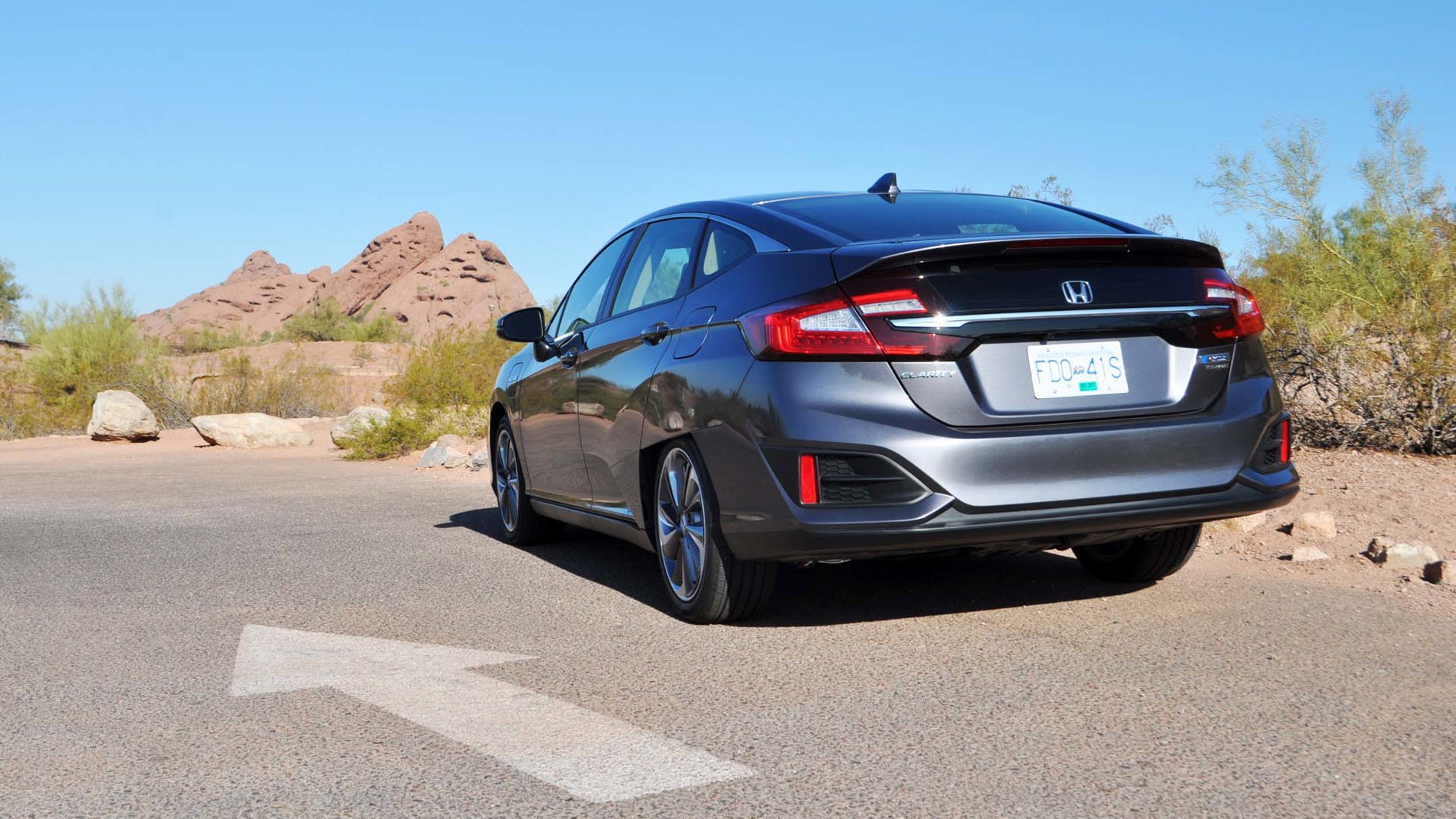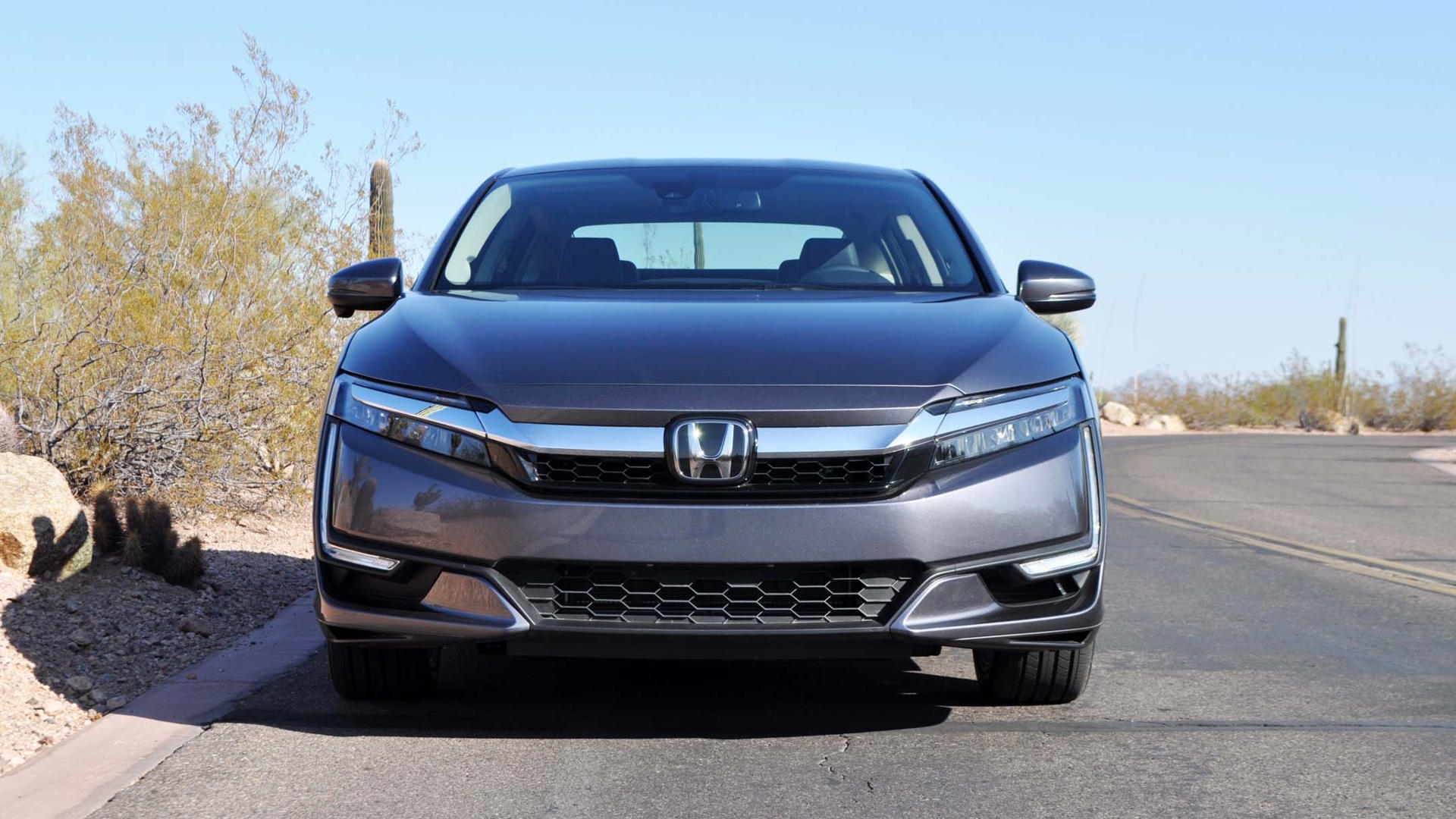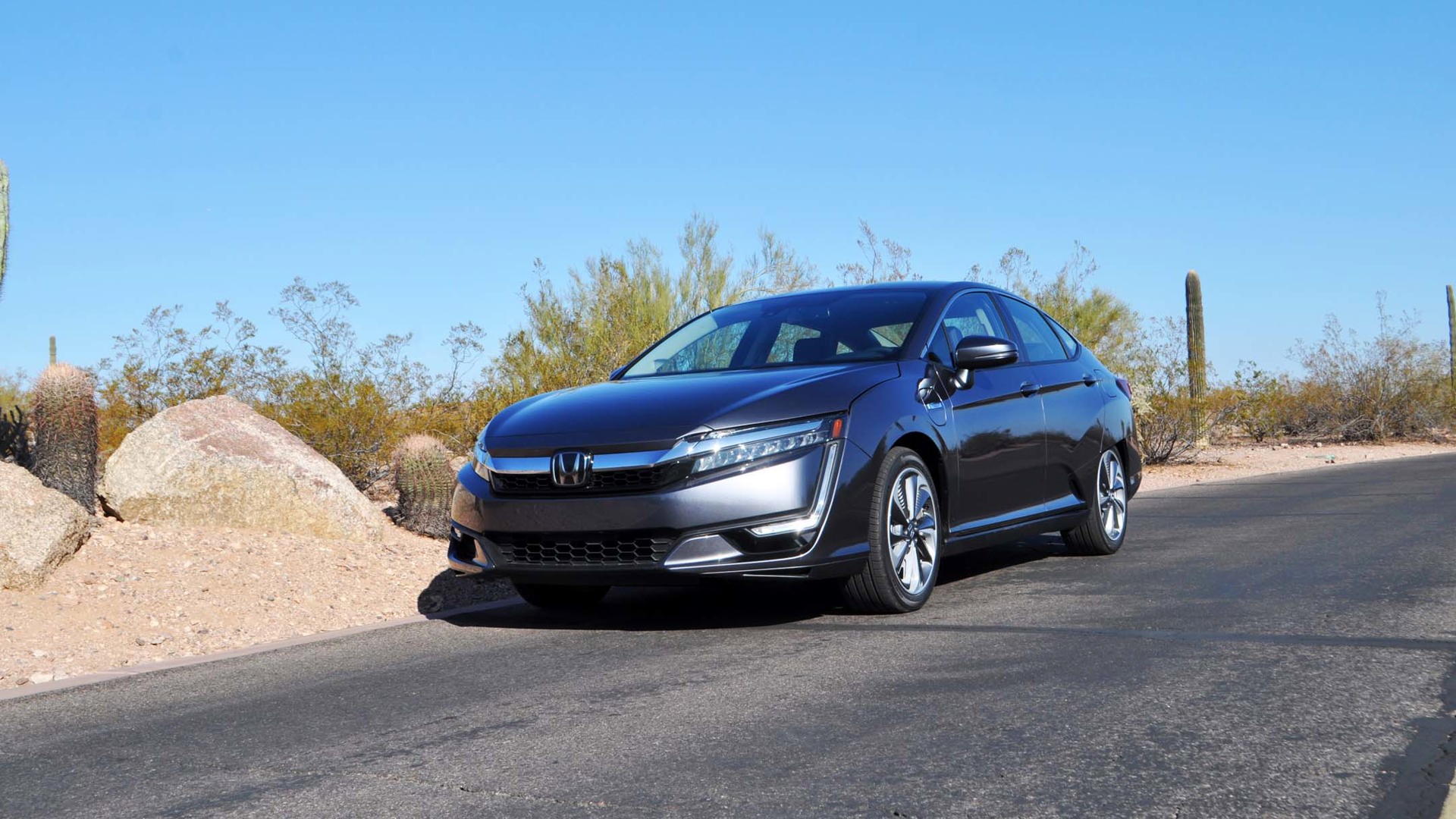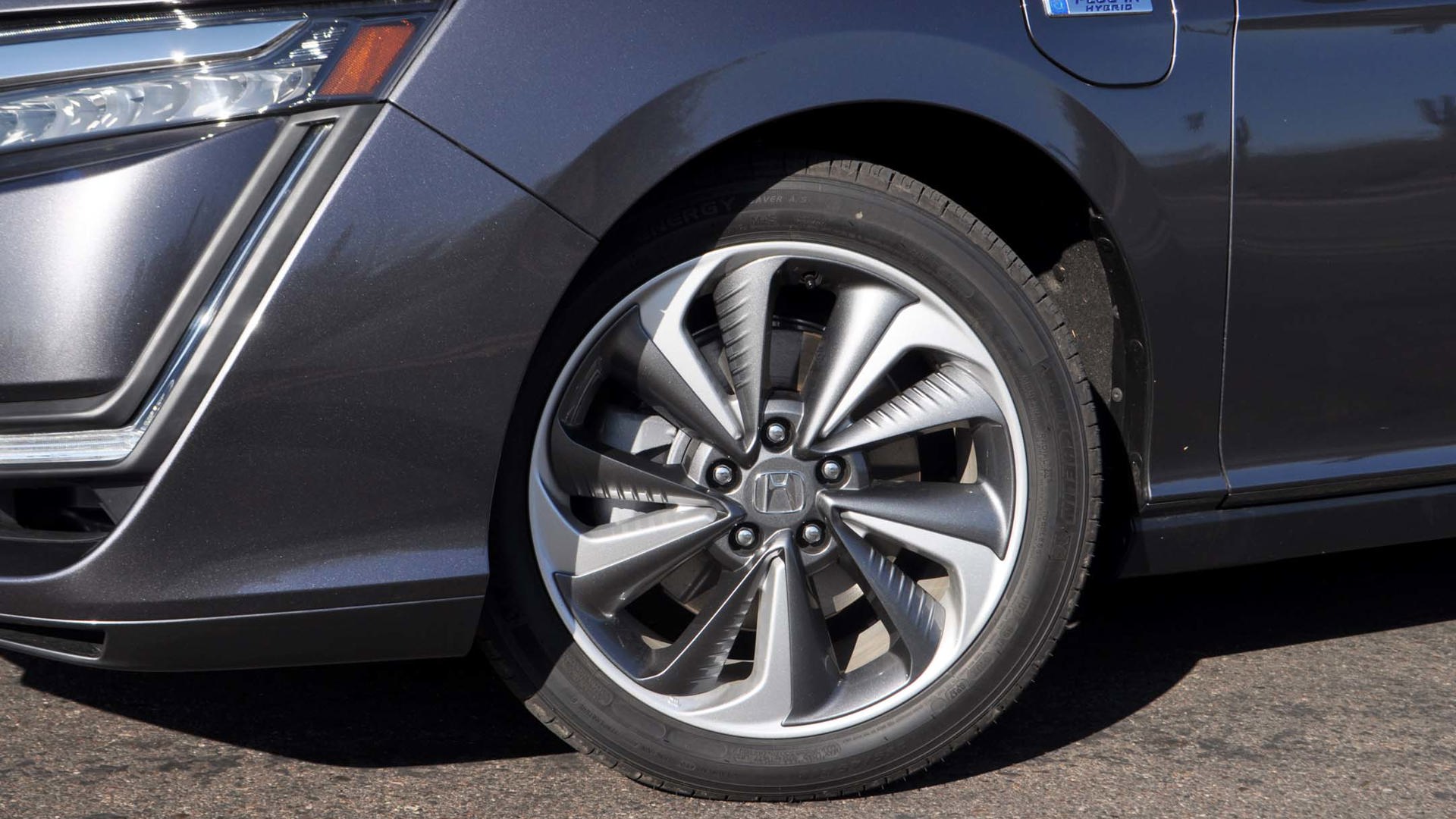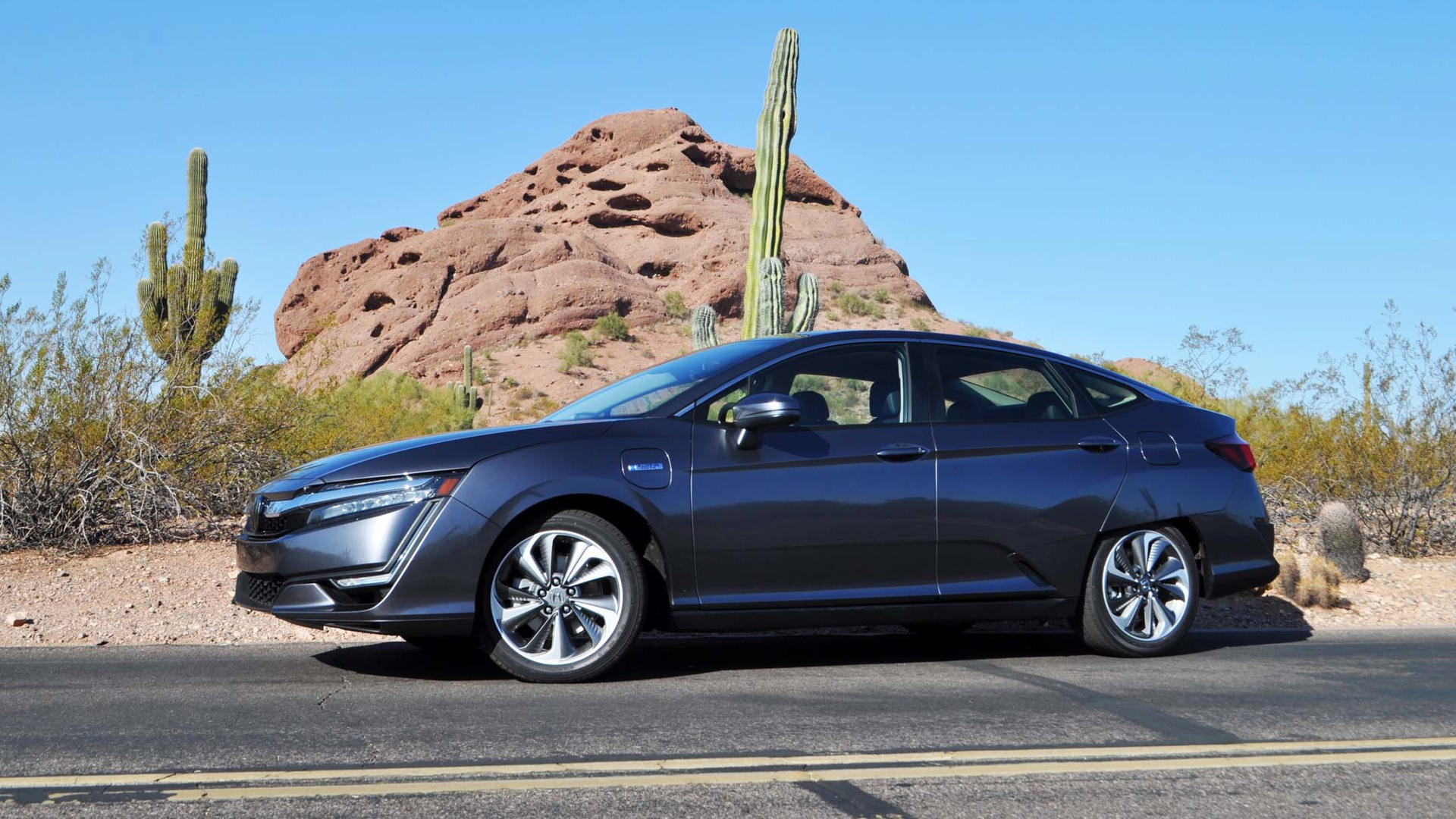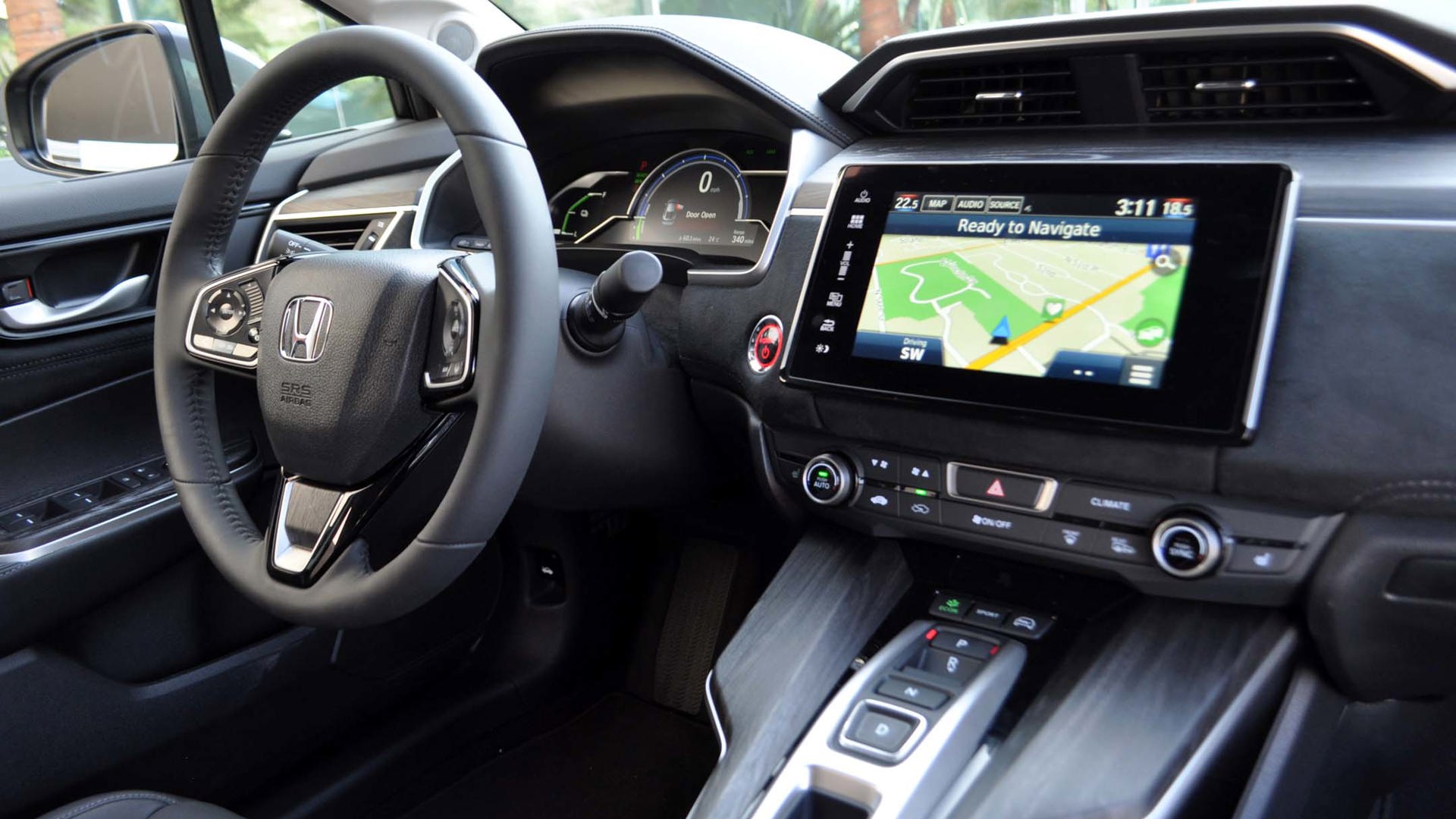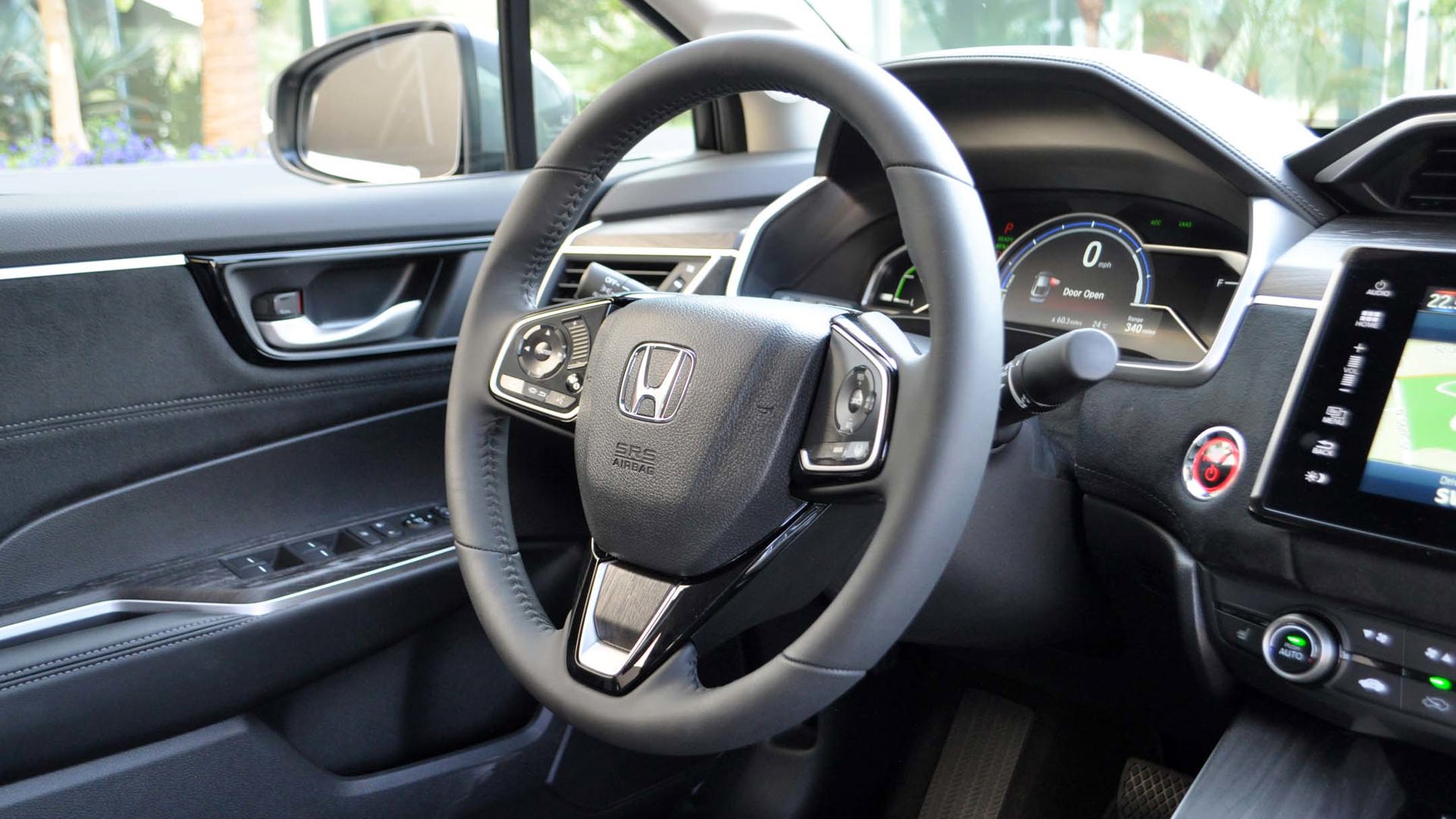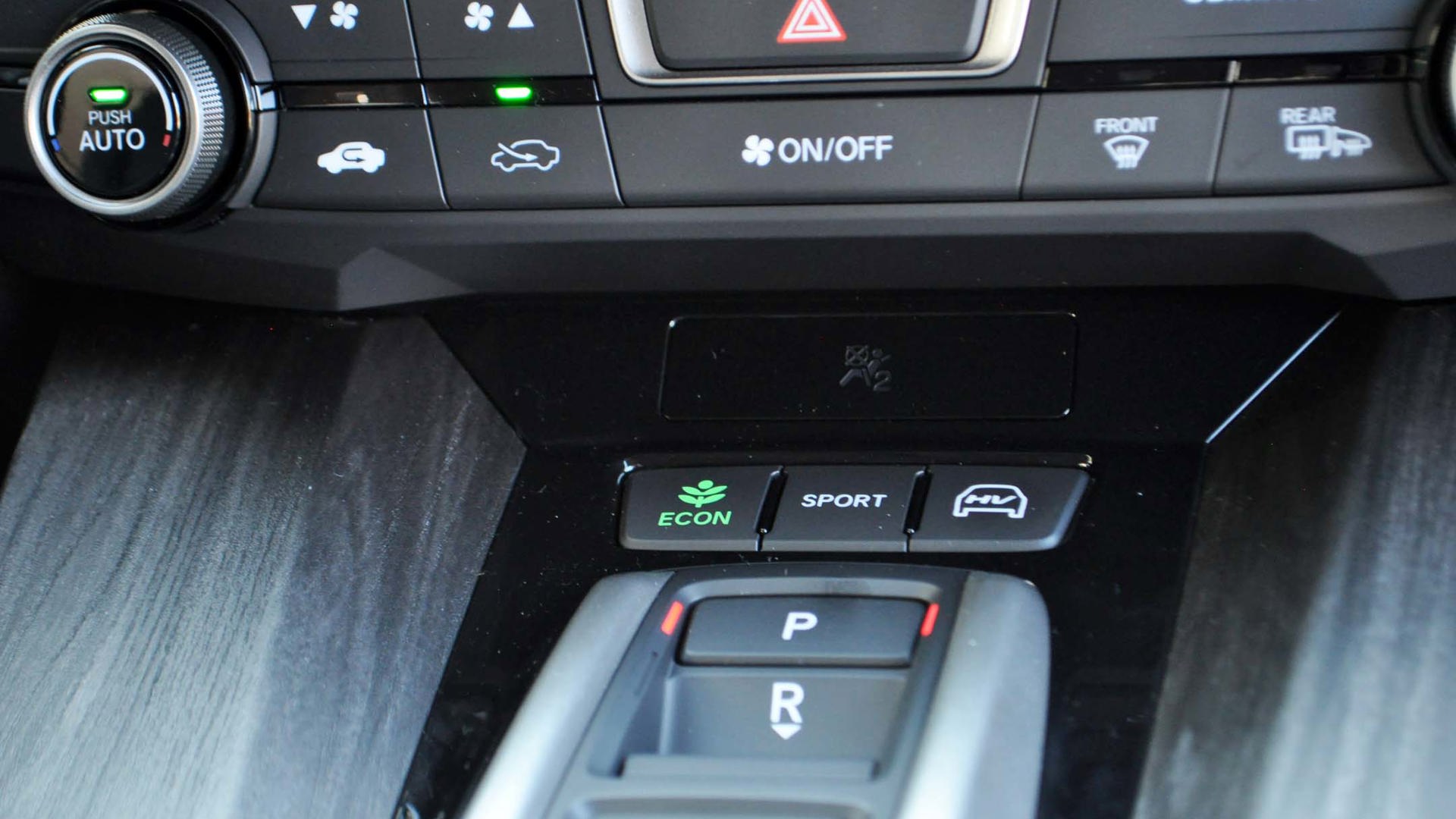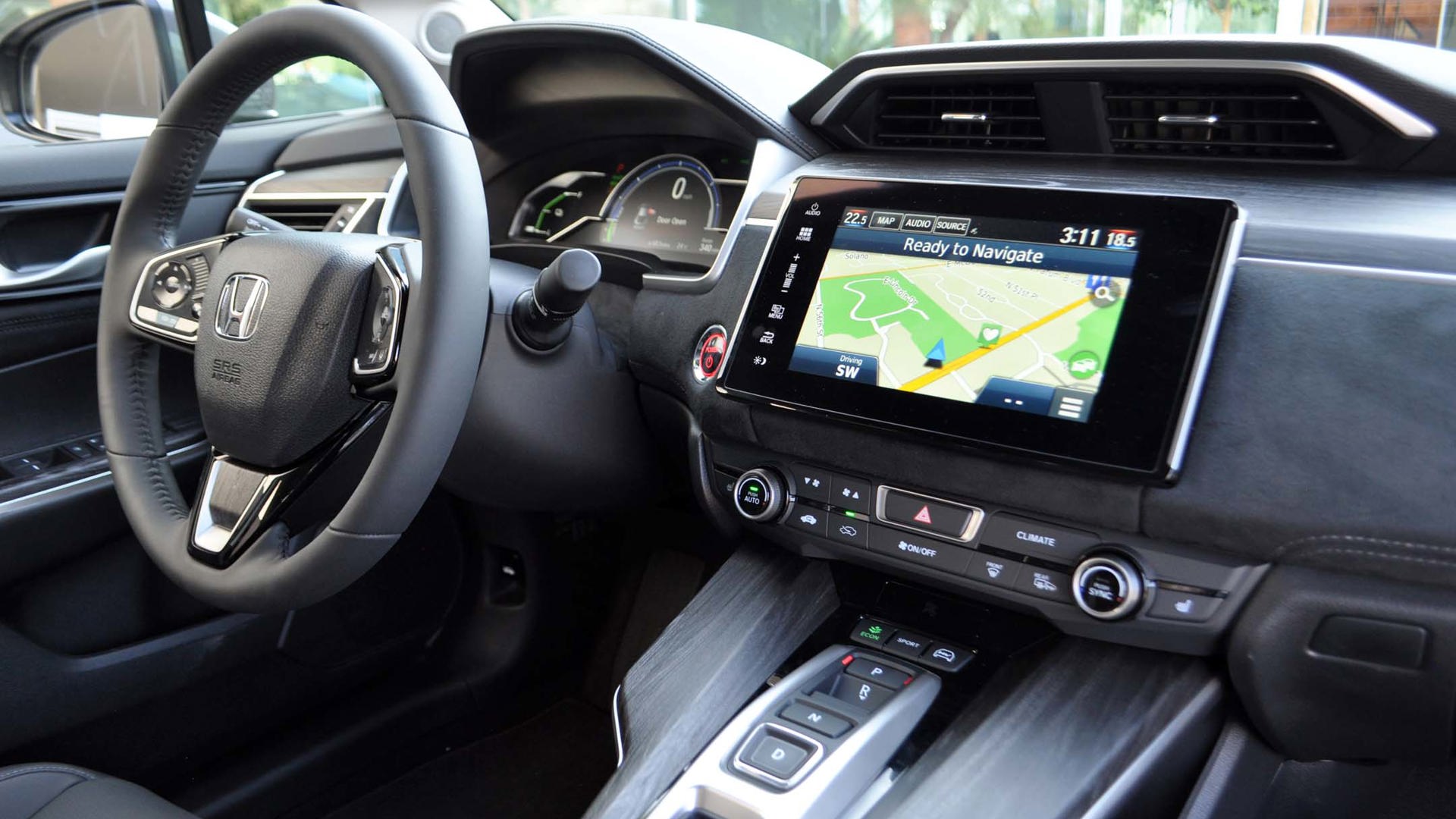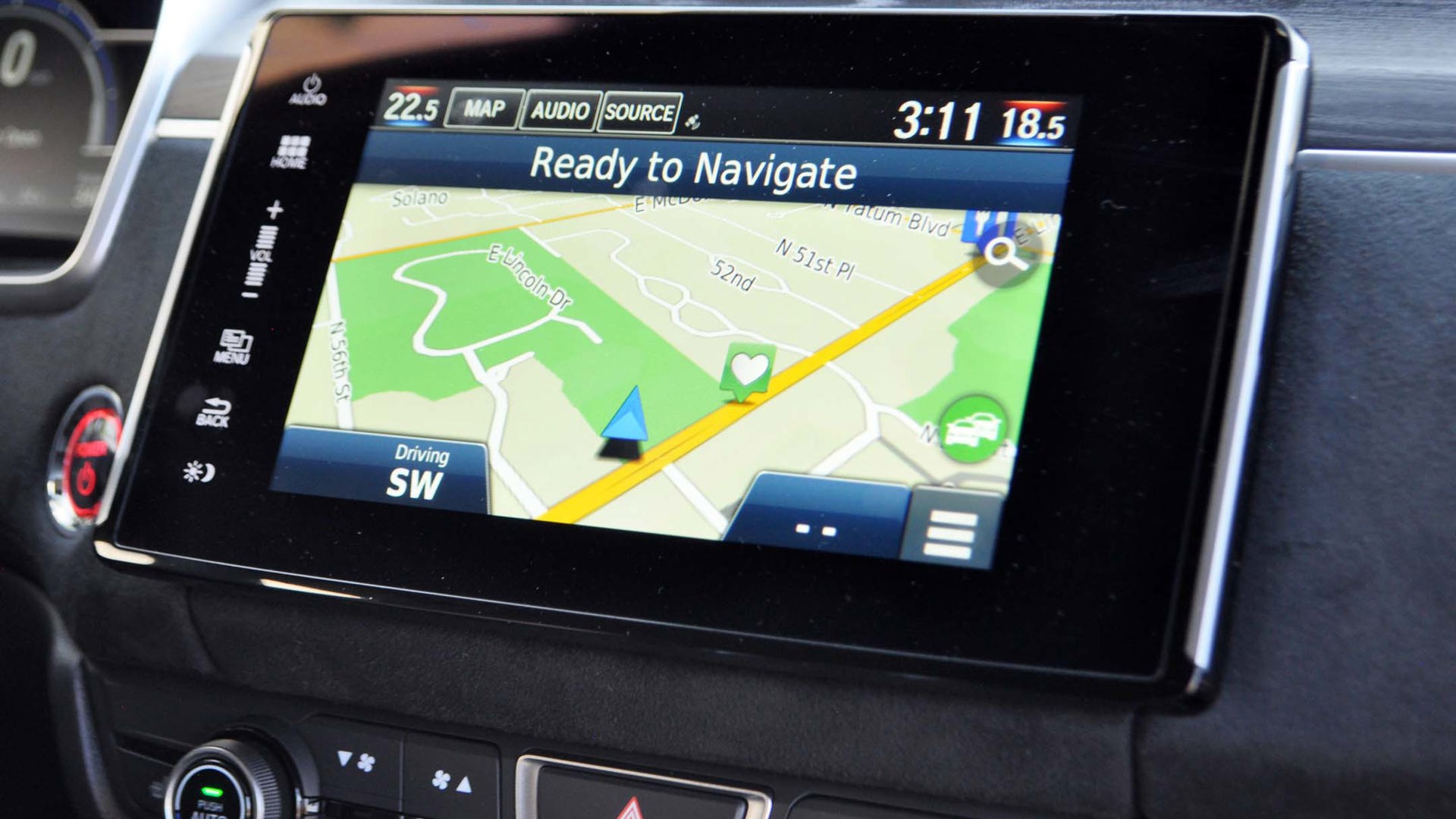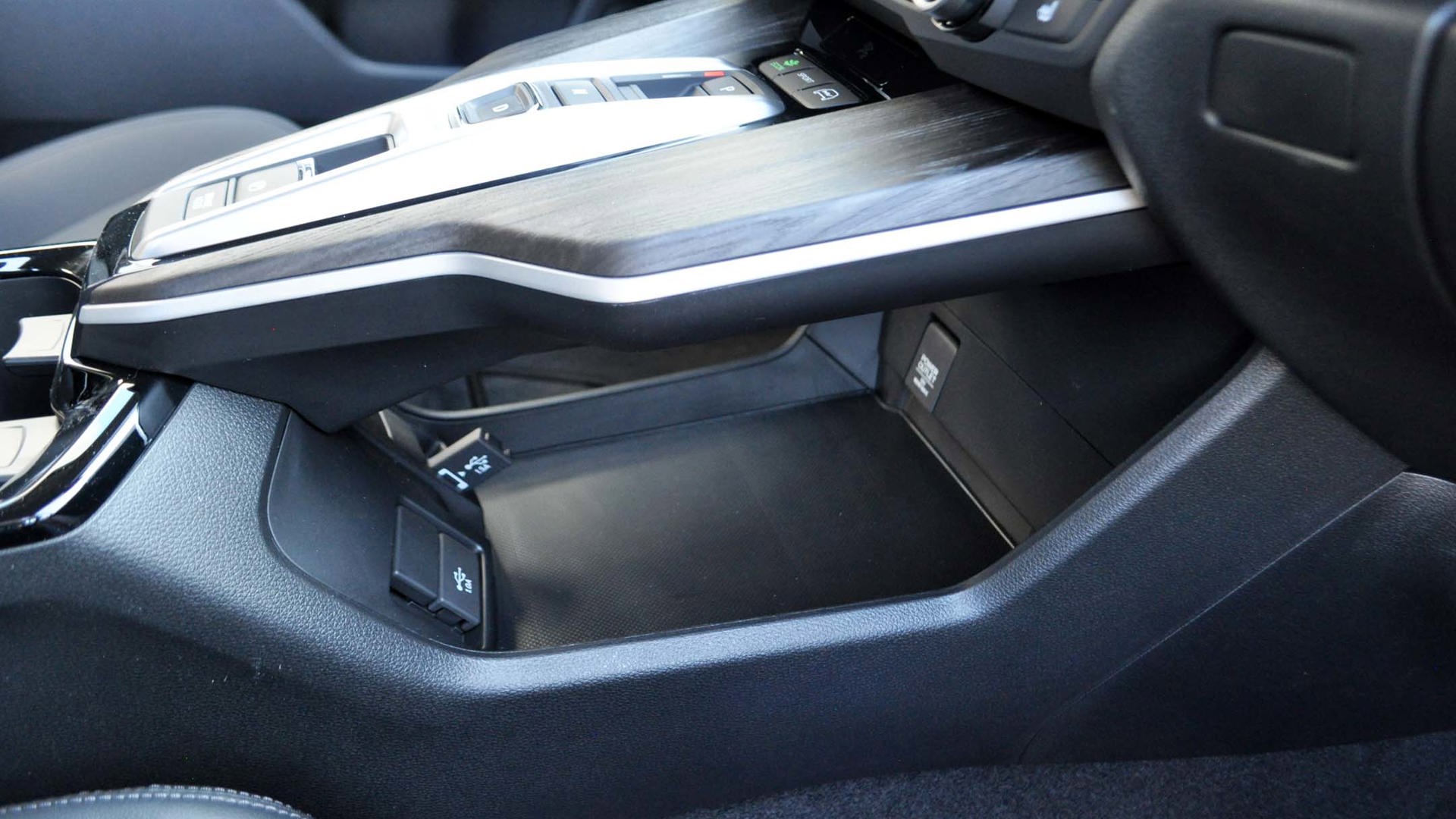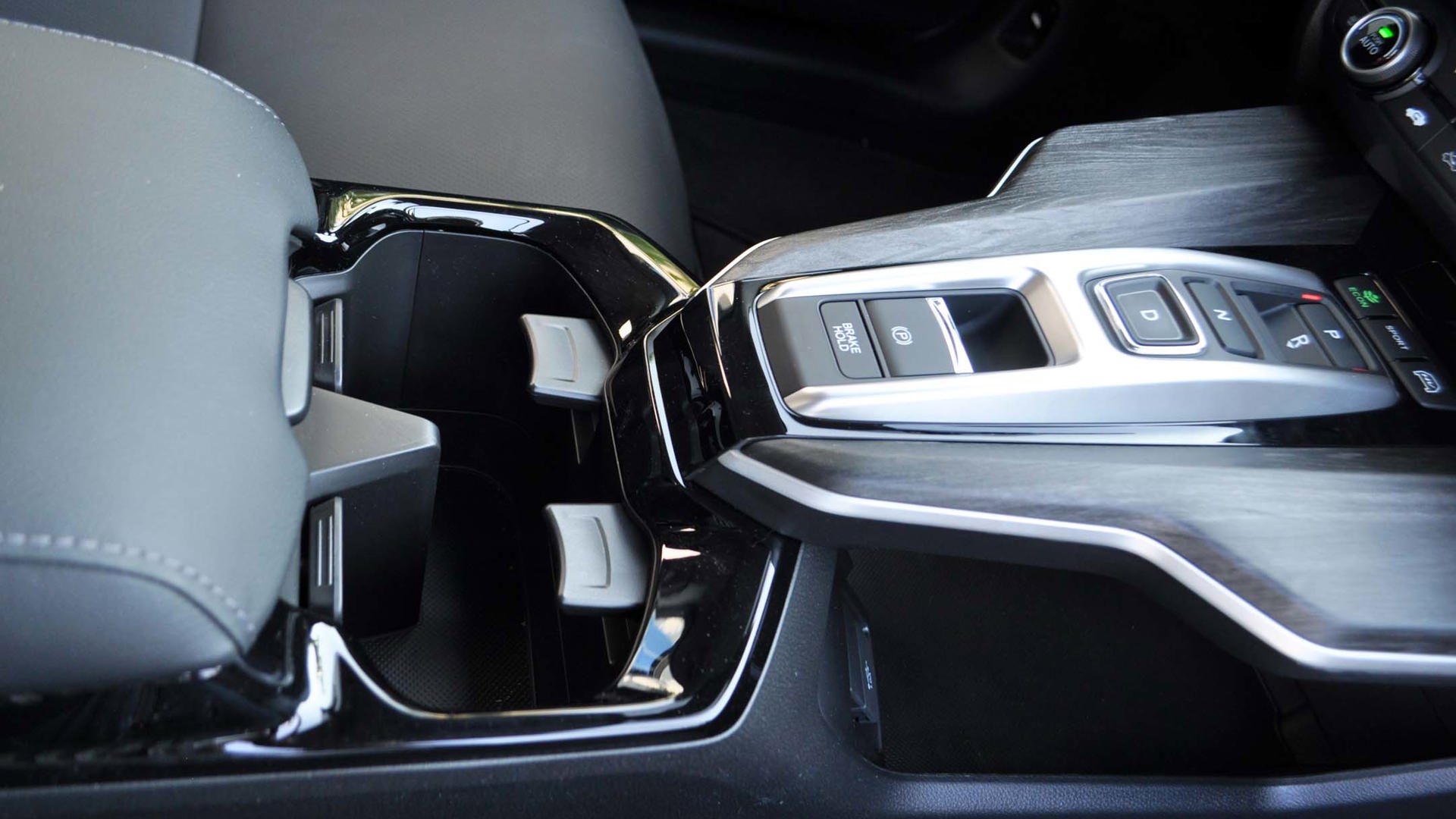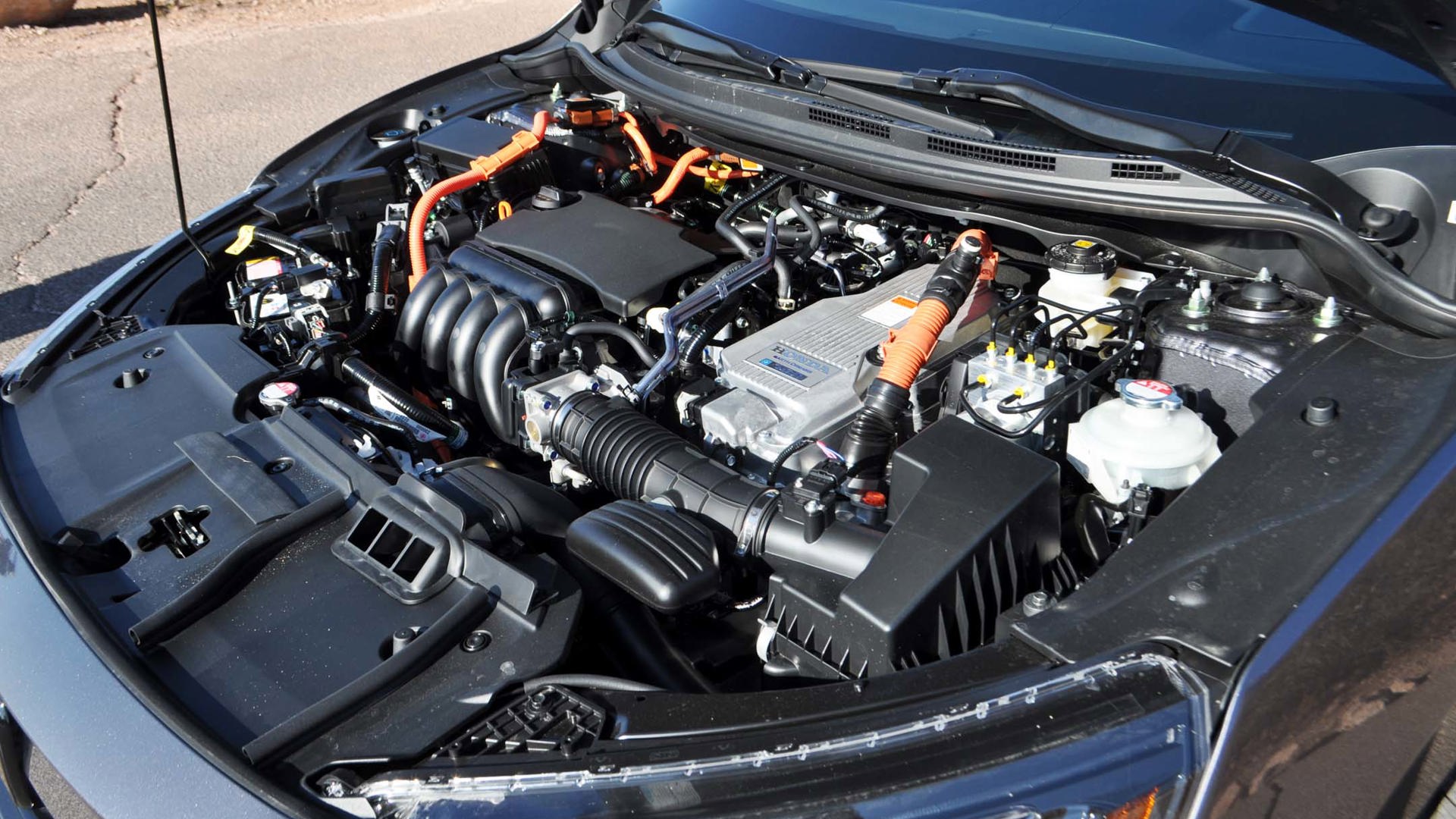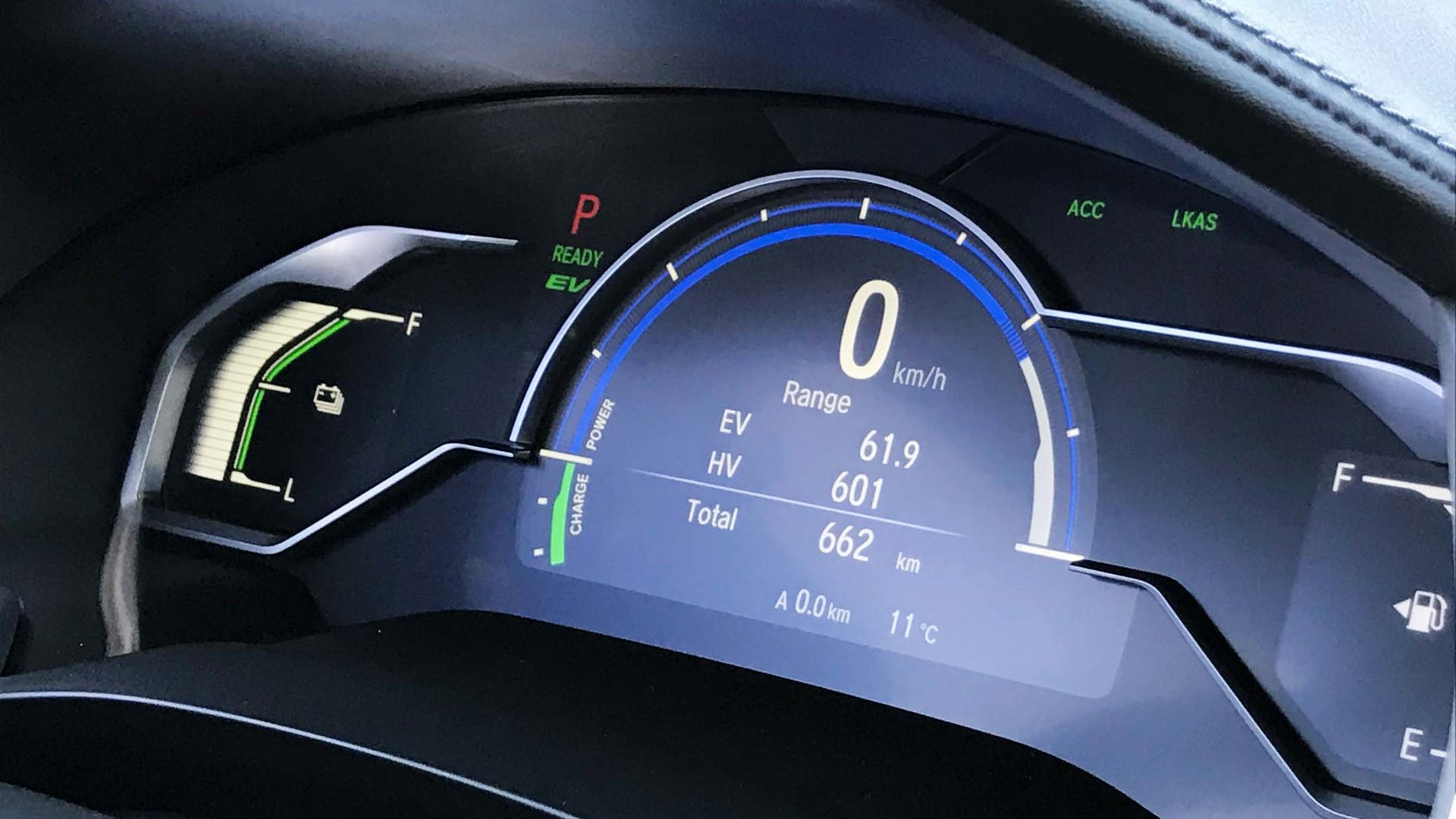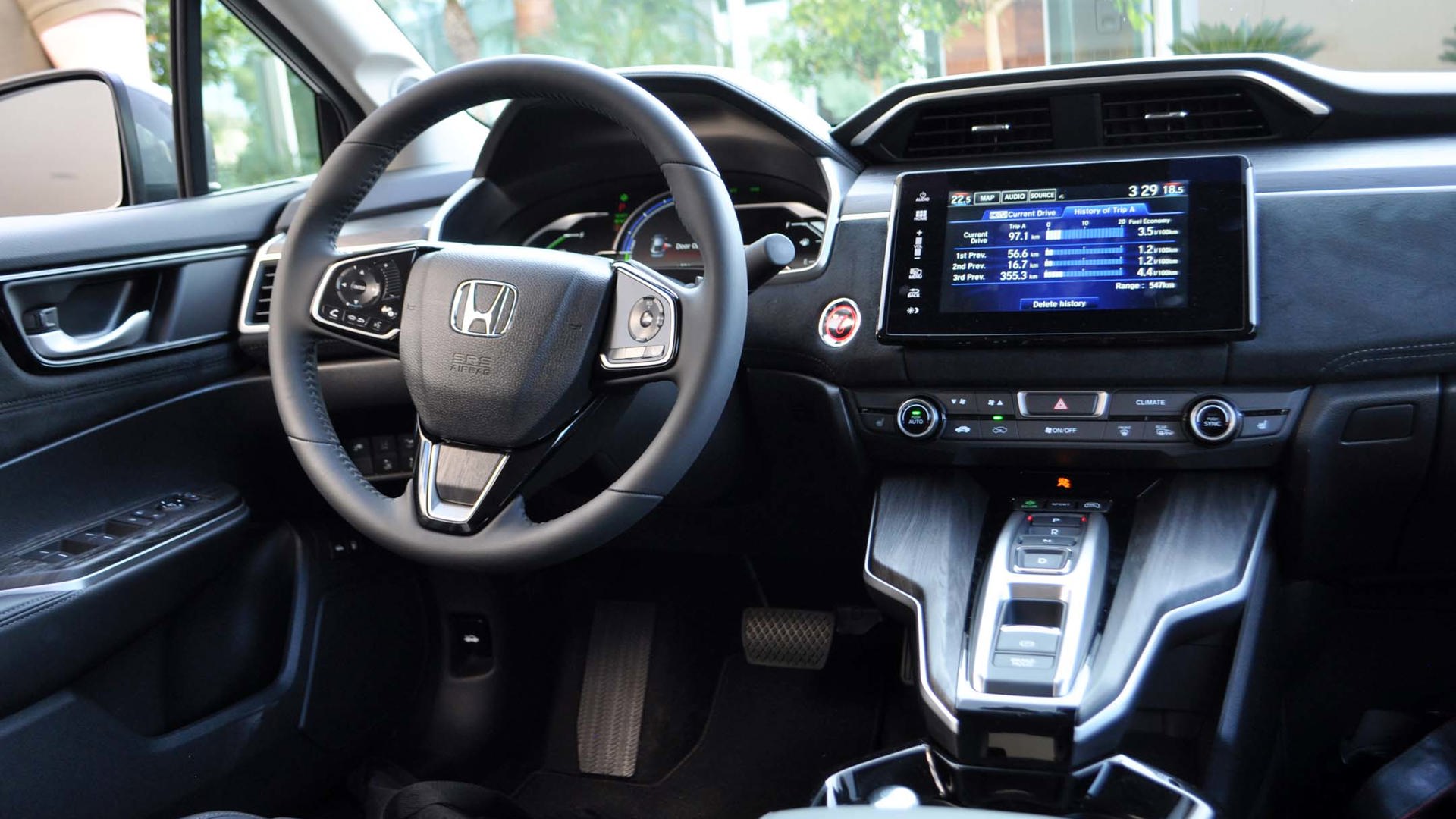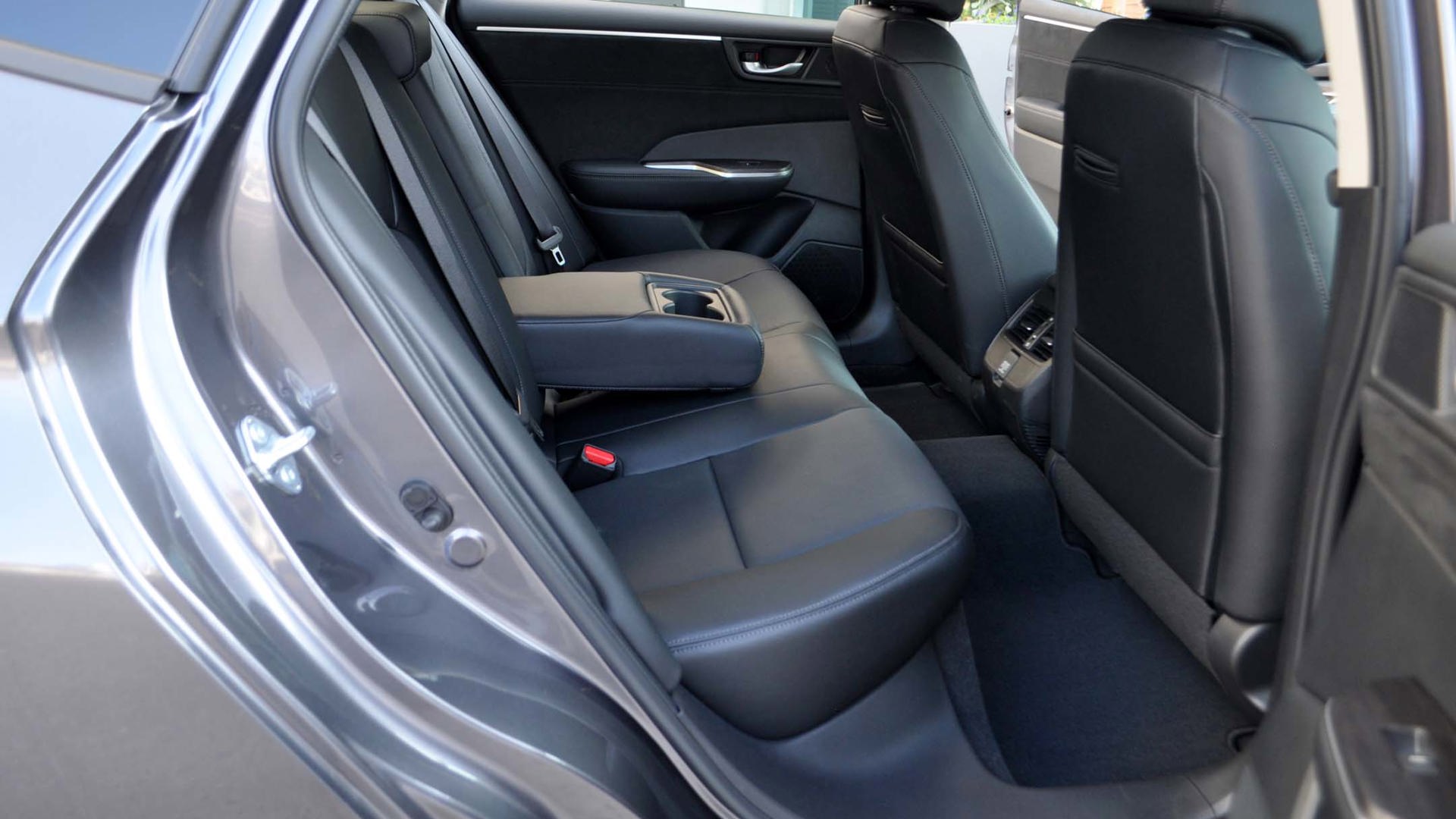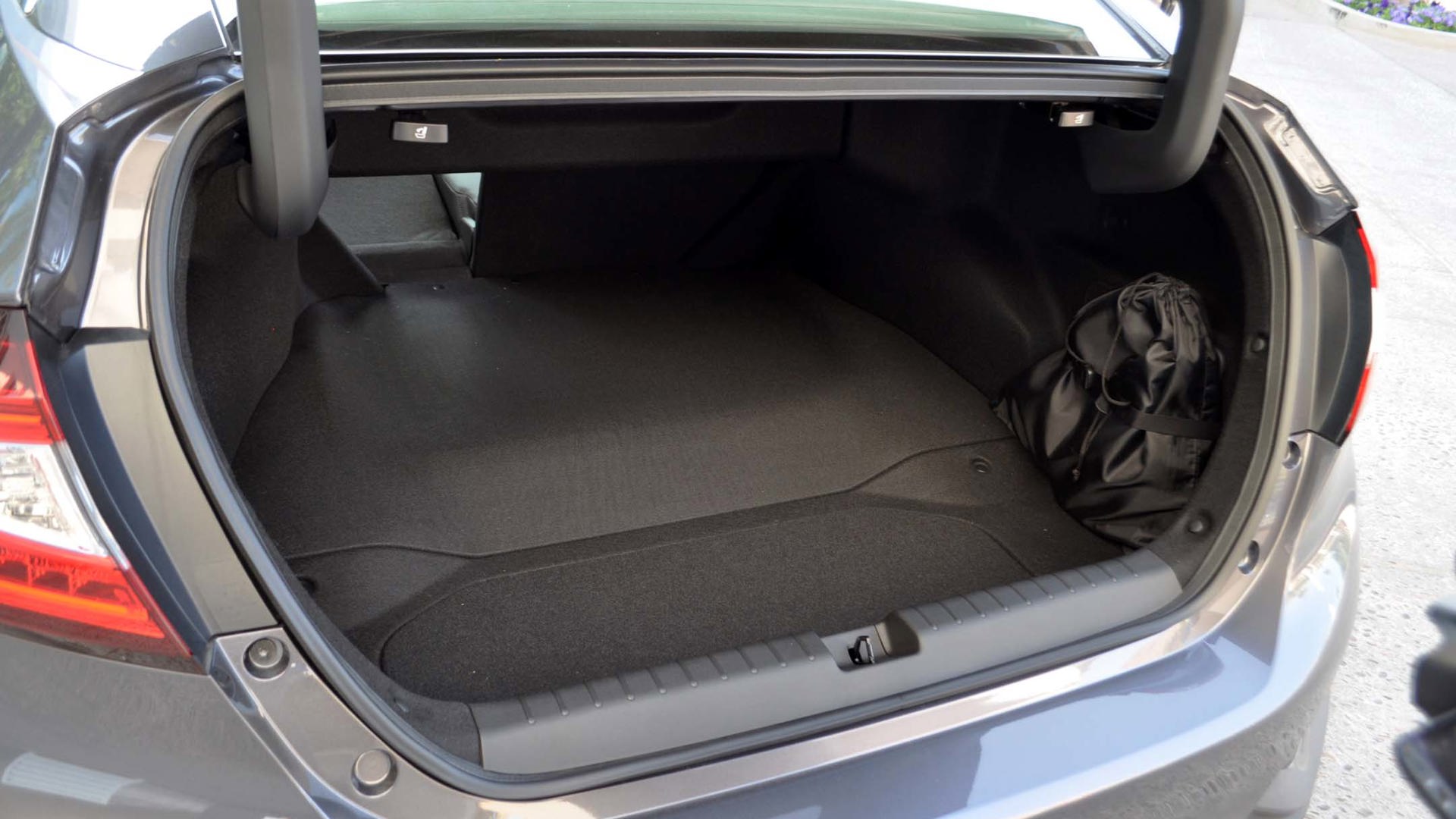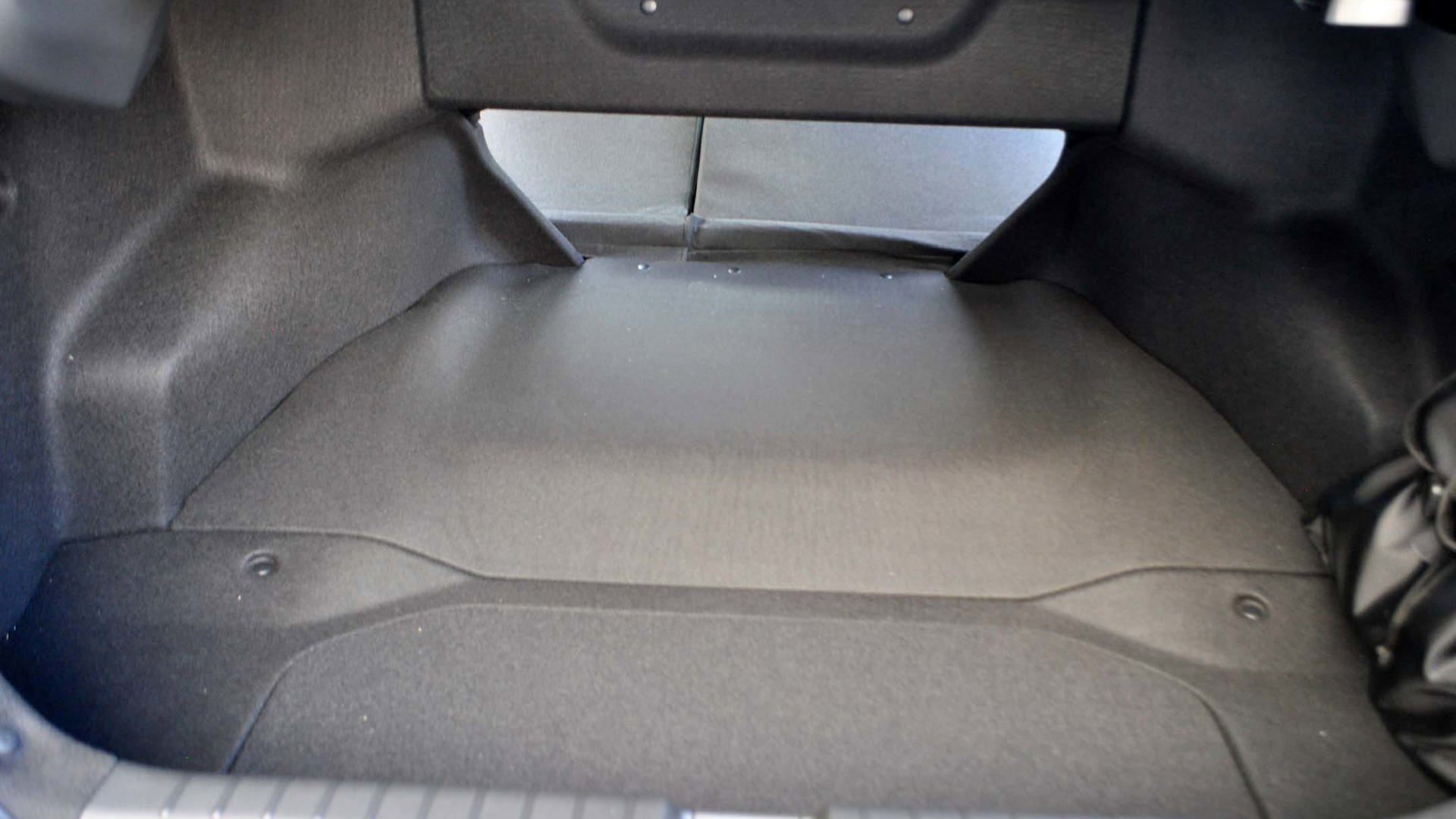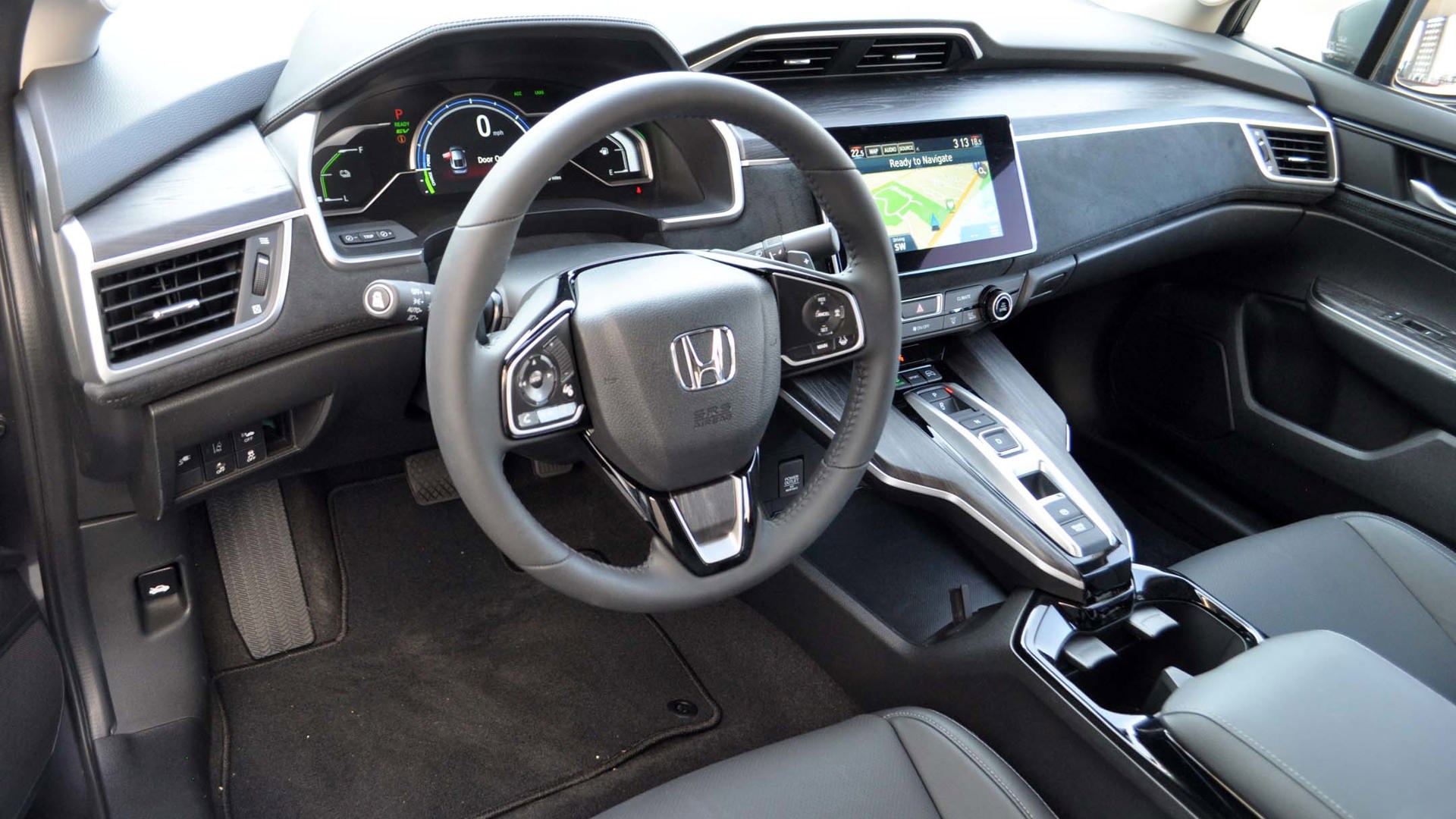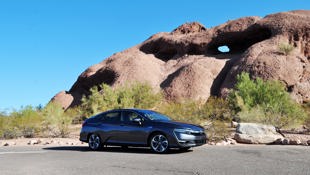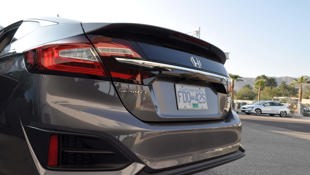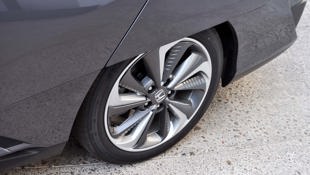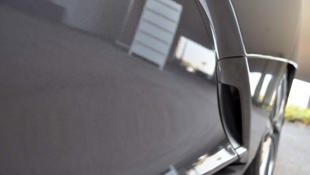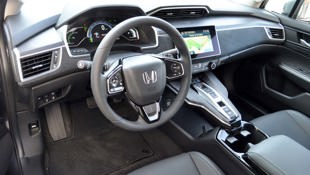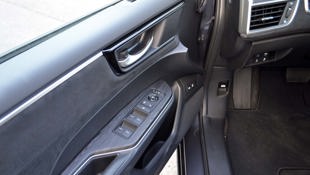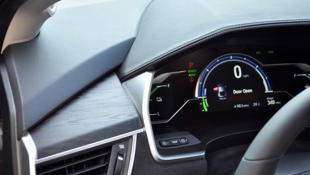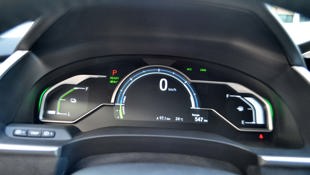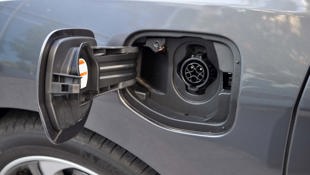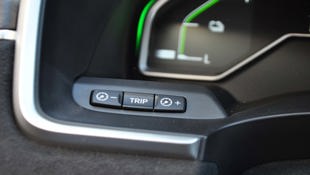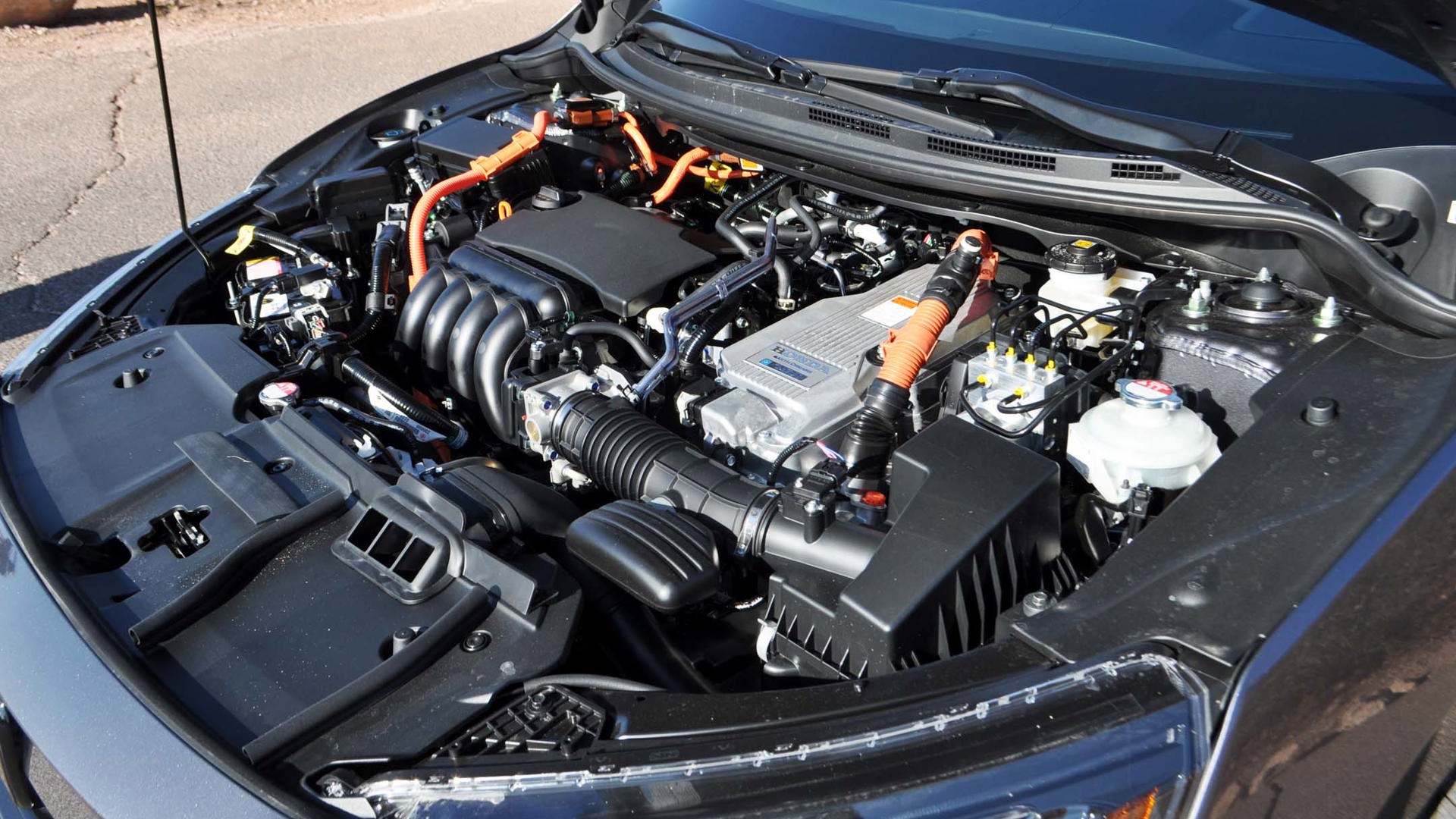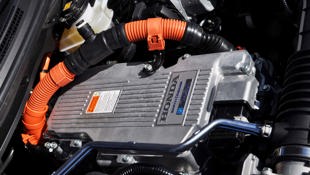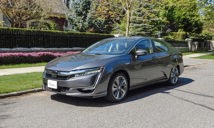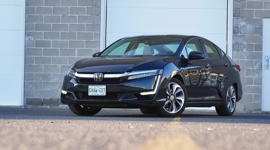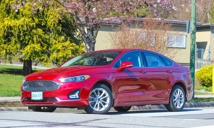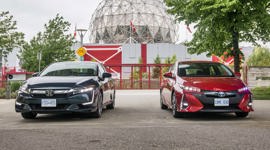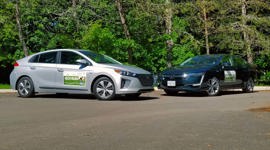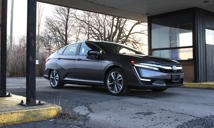Scottsdale, AZ – It has been an unfortunate fall from environmental leadership for Honda in the past few years. Sure, its mainstream models are still often amongst the most fuel efficient in their class, if not the most, and some may argue that this helps the air we breathe more than the techiest zero emissions vehicle that barely dribbles off dealer lots. But Honda Canada has stalled when it comes to leading the charge towards next-level fuel efficiency, with only a couple of relatively low volume gas-electric hybrid models now in its Acura stable to keep the company in the (barely) electrified game.
With juice left in that big battery, the slick aero and lack of engine noise provides a big dollar luxury car feel.
Honda’s American arm has put a few mandated battery electric and not-so-mandated plug-in hybrids and fuel cell vehicles on sale in the US, but Honda Canada decided not to sell or lease any of these north of the border.
That’s unfortunate, because Honda has always been known for its advanced powertrains. Not only did its mid-’70s launch of the Civic with its cleaner CVCC engine help grow a massive market for more fuel efficient small cars in North America – as did a couple of gas crises – the company was also the first to launch a gas-electric hybrid on this continent in 2000. But this Honda Insight was an automotive oddball, its tiny two-seat body highlighted by body panels that covered half of its rear-wheels. Then the less efficient but much more practical four-door Toyota Prius hybrid arrived on these shores months later.
And there’s no question which vehicle (and hybrid strategy) became the successful VHS versus Beta/MySpace versus Facebook/Yahoo versus Google in that equation.
The Prius and Toyota’s expanding lineup of hybrids have become a mainstream hit with North American buyers in the two decades since, while Honda’s follow up gas-electric hybrids (the four-door Insight, Civic Hybrid, Accord Hybrids) have either disappeared entirely, or sold in tiny numbers.
This past decade, when Chevrolet, Nissan and Tesla were taking the next leap forward to a new generation of electric vehicles that were now plugged in, and sold in Canada, Honda promoted the potential-but-currently-theoretical benefits of fuel cell vehicles. Yes, these electric vehicles that generate their electricity onboard from a hydrogen powered fuel cell stack instead of pulling it from the electricity grid can be refuelled much faster than plug-in electrics, and Honda did show some environmental leadership by leasing a few fuel cells in very limited numbers in California.
But with no public hydrogen infrastructure to fuel these vehicles in Canada, and no fuel cell auto manufacturer willing to invest in infrastructure the way Tesla has with its quick chargers, Honda has largely sat on the sidelines.
Until now, that is. The 2018 Honda Clarity officially went on sale in mid-December, and it’s now a plug-in hybrid mid-size sedan that offers more space than most of its PHEV rivals, but also has some clear company DNA to the spacey original Insight, and Honda’s more recent fuel cell efforts.
Spacey looks, with serious all electric range
Styling is not original-Insight-radical, but maintains a spacey utilitarianism that could easily be cast as a droid transporter from the latest Star Wars flick. You either like it or you don’t. Judging by early social media reactions, the latter camp will be larger than the former.
If the Clarity’s futuristic shape looks oddly familiar for an all-new vehicle, that may be because the identical-looking Honda Clarity Fuel Cell went on sale in California in December 2016, and an all-electric battery electric version (BEV) also went on sale in California and Oregon in limited quantities as well earlier this year. But there are no plans to bring either of those tiny volume versions north, say Honda Canada officials, as the Clarity plug-in hybrid (PHEV) that is on sale now is certainly the most practical and least compromised of the three.
Its silhouette was largely shaped by aerodynamics, and likely engineers, with a desire to achieve the highest all-electric range possible before the gas engine kicks in and ends the drivetrain silence. That aero focus extends to the 18-inch alloy wheels, which are interlaced with plastic covers which helps keep the flowing air out of the wheels, said Hayato Mori, assistant vice president and technical guru at Honda Canada at the Clarity PHEV’s launch here in Scottsdale, Arizona, where the low 20s temperatures were perfect to show off the Clarity’s impressive 77 km official all-electric range.
And then there are those rear wheel covers. It doesn’t wall off half of the rear wheel like the maniacally efficiency-focused original Insight did, but the section of the rear wheels it does cover underlines the fact that efficiency trumped anything else in this Clarity’s design. Those covers are part of what Honda calls “air curtains” crafted into the bodywork on the front fenders and rear doors to cut drag and help air flow efficiently, said Mori.
It all worked as advertised, as we observed a full 79 km before the fully charged lithium-ion 17 kWh battery was depleted, though the 1.5-litre Atkinson-cycle four-cylinder gas engine did kick in a few times while we tested it out at full throttle, and in various modes. Keep in mind too that this is still in basically ideal temperatures, and with no highway driving or use of the heater, as there was more AC need down here while driving through the Arizona desert.
Upscale driving feel and regen paddles to play with
Those driving modes include buttons for Econ(omy), Sport and Hybrid modes. The Sport mode brought all 212 combined horsepower and 232 lb-ft of torque from both the gasoline and electric power sources, while the Econ button had the opposite effect, limiting power and overall responsiveness. The Hybrid (HV) mode button will keep it acting like a regular Hybrid, alternating between electric and gas use, while a long press will keep it in Charge mode, and constantly charging the engine.
Surprisingly, and perhaps disappointingly, there’s no EV mode button to lock it into using only electricity for as much as possible, which would be useful for those who’d like to avoid using gas as much as possible – which is likely most Clarity buyers. This is likely because the Clarity PHEV’s standard default mode is programmed to keep the engine off as long as possible, so on the road, the driver can quickly put one’s foot down in this mode to quickly scoot around the city without the engine kicking in.
But if you plant your foot (more than about 75 percent roughly) in this mode, the engine will kick in, while I found the engine actually seems to kick in closer to half throttle in any of the other modes. There’s no tach, or transmission, in the Clarity, but you can keep an eye on how hard you’re goosing the accelerator with a blue gauge that effectively acts as a tach for both electrons and true engine revs.
While the Sport was certainly the most fun and frisky mode, the Clarity’s road manners are most impressive for their super quiet and refined feel. With juice left in that big battery, the slick aero and lack of engine noise provides a big dollar luxury car feel. Even handling on some curvy stretches proved secure if not scintillating, its surprisingly low profile Michelin rubber providing a compliant ride on top of low-rolling resistance efficiency.
What’s most impressive about the Clarity is the space inside that it offers up along with its significant all-electric range. Its back seat feels like the Grand Canyon compared to its closest rival, the Chevrolet Volt, while the Clarity also offers modern cell phone pockets in the rear seatbacks (though surprisingly no USB or 110V connection) in the back seat that can actually fit three people.
The Clarity’s futuristic exterior is reflected with a similarly spacey interior, with buttons for Drive and Park replacing any type of shift lever. These buttons are located on a floating centre panel that also allows for extra storage underneath it as well, large enough for an iPad or the DSLRs we carried for photography.
Trunk space is a healthy 439 litres, which is only slightly smaller than a regular Accord’s 473 litres. But there is a notable slope in the trunk, as well as a divider visible in the driver’s rear view, both likely a result of the required frame adjustments needed to accommodate the hydrogen tanks of the Clarity’s fuel cell version.
Government rebates are significant thanks to the huge battery for a plug in
The base Clarity will start at $39,900 for the base model, and $43,900 for the top Touring model that we drove. That top model adds navigation, leather, a nice ultrasuede material stretching all across the interior, as well as satellite radio and remote starter system. That’s on top of the heated seats, LED head and taillights, and Apple CarPlay/Android Auto that comes standard on all Clarity models.
That still leaves some notably missing niceties at this $40k price level: a heated steering wheel and sunroof are notable absences, while even cooled seats are available on Hyundais and Kias well under $30k.
Thanks to the hefty 17 kWh size of the lithium-ion battery, the Clarity PHEV qualifies for the maximum provincial government rebates in all three provinces: $5,000 in BC, $8,000 in Quebec and $14,000 in Ontario. Honda says that dealers will need to install at least two 240V charging stations to be able to sell and service the Clarity, and roughly 152 of Honda Canada’s current 234 dealers have done so, with indications of more to come.
If you happen to walk into a Honda dealership looking for a Clarity that isn’t certified to sell them, the company says they have set up inventory to be able to send the car to any dealer or customer that wants it. This seems very optimistic on Honda Canada’s part, but it’s a worthy attempt to tackle the issue of EV and non-EV dealers alike trying to steer folks away from less available and more potentially profitable models.
Honda Canada expects most customers will lease the Clarity, and though it didn’t release monthly payments at the launch, said they would be fighting to keep lease payments “reasonable,” with those government rebates rolled into the lower monthly payments especially.
Conclusion
It’s clear that Honda has learned from some of its previous missteps, but that same dedication to efficiency is still unmistakeable in this 2018 Honda Clarity Plug-In Hybrid. Its polarizing looks, somewhat compromised body and (current) feature choices likely mean that it’s not going to overtake mainstream models in sales. But it will outsell the Accord Hybrid, Honda officials vowed. Plus it puts Honda back into the game of next-level fuel efficiency, and with perhaps the most challenging rival to the Chevrolet Volt yet, which has long been one of the best-selling plug-in vehicles in Canada.
